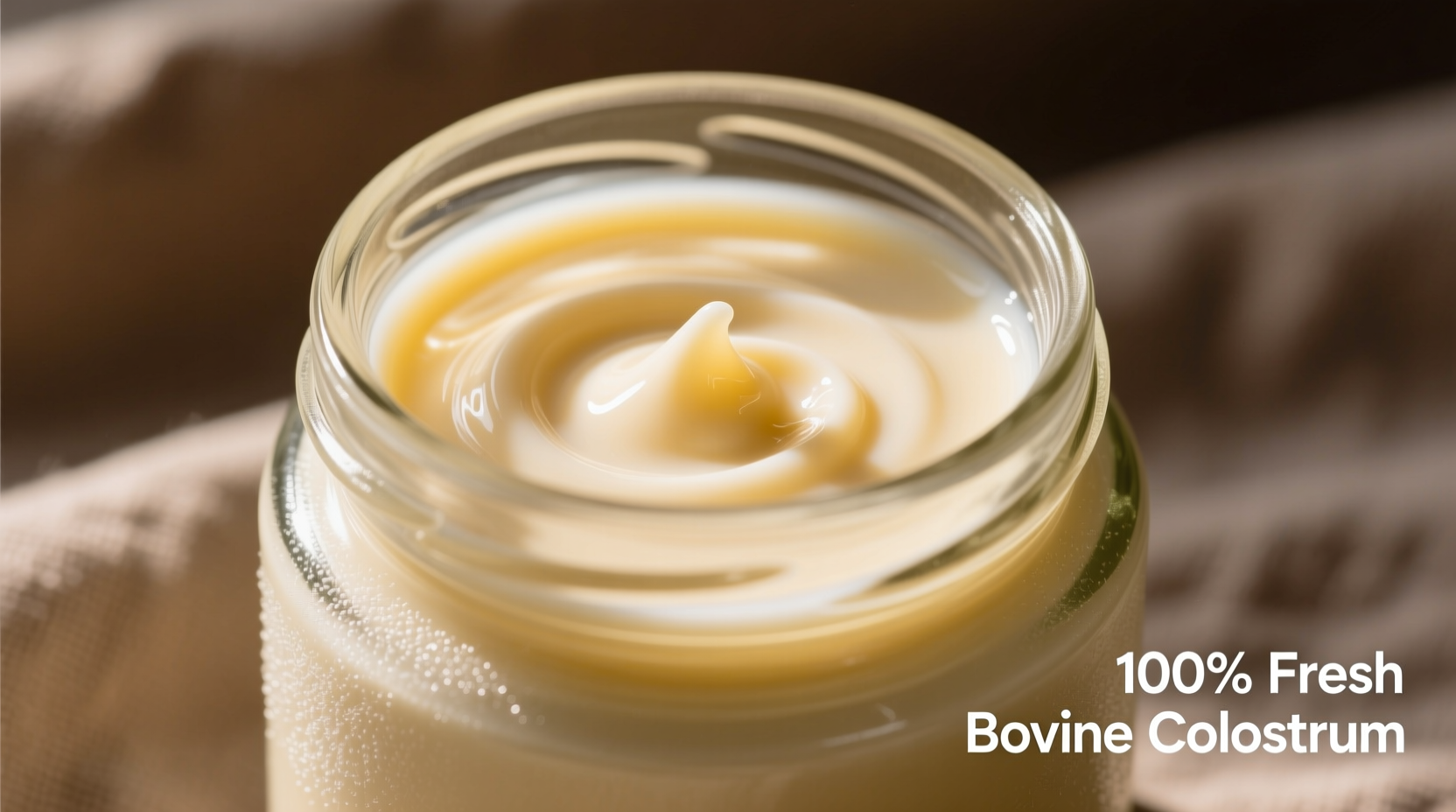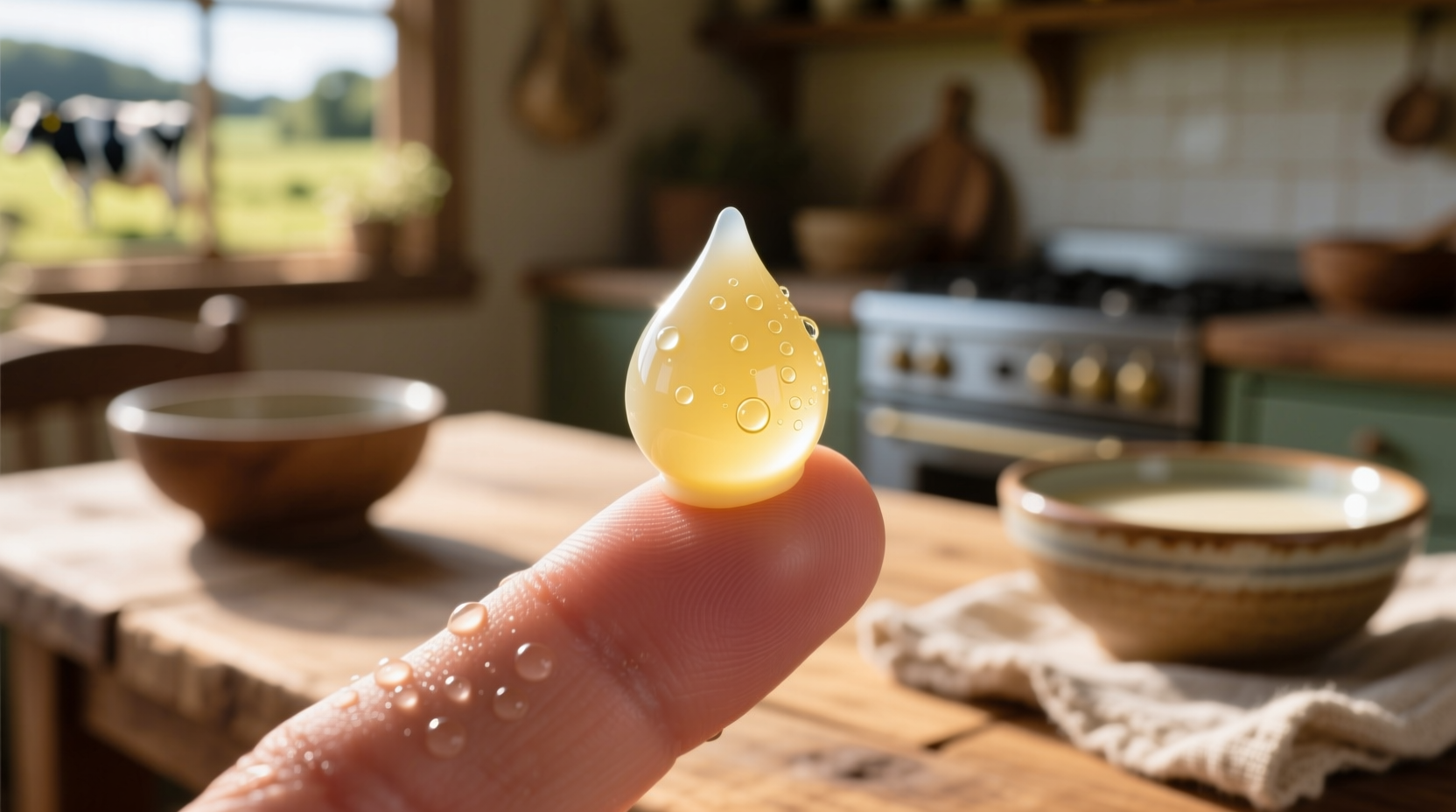Understanding what colostrum tastes like matters if you're considering incorporating this nutrient-rich substance into your diet. Whether you're exploring bovine colostrum supplements for immune support or curious about this first milk produced by mammals, the sensory experience significantly impacts whether you'll continue using it regularly.
What Exactly Is Colostrum?
Colostrum is the initial form of milk produced by mammals during the first few days after giving birth. Rich in antibodies, growth factors, and nutrients, it serves as nature's first immune booster for newborns. While human colostrum supports infant development, bovine colostrum has gained popularity as a dietary supplement for adults seeking its potential health benefits.

Breaking Down the Colostrum Flavor Profile
When describing what does bovine colostrum taste like, most people note several distinct characteristics:
- Sweetness level: Mildly sweet, less pronounced than regular milk due to lower lactose content
- Texture: Thicker and creamier than skim milk, though less rich than whole milk
- Primary notes: Subtle nutty or earthy undertones with a clean dairy finish
- Aftertaste: Clean with minimal lingering flavor, though some detect faint mineral notes
Temperature significantly affects the taste experience. Chilled colostrum presents a cleaner, more refreshing profile, while room temperature samples reveal more complex flavor notes. Freshness also plays a crucial role—properly handled colostrum maintains its characteristic mild flavor, while compromised samples develop unpleasant sour or metallic notes.
Factors That Influence Colostrum's Taste Experience
Several variables affect what does colostrum taste like, creating natural variation between samples:
| Factor | Effect on Taste | Practical Implication |
|---|---|---|
| Source animal | Bovine: mild nutty notes Human: sweeter, less pronounced flavor Caprine: stronger, grassier profile |
Most supplements use bovine due to balanced flavor profile |
| Processing method | Raw: fullest flavor expression Pasteurized: slightly muted profile Freeze-dried: concentrated, sometimes chalky notes |
Processing affects both taste and nutrient retention |
| Collection timing | First 24 hours: mildest flavor Days 2-3: increasingly robust profile |
Early collection preferred for most palatable supplements |
How Colostrum Compares to Familiar Dairy Products
Understanding what does colostrum taste like becomes easier when comparing it to everyday dairy items. While similar to milk, colostrum has distinct characteristics that set it apart from regular dairy products.
Unlike whole milk's pronounced sweetness and creamy richness, colostrum offers a more delicate flavor profile. It shares some similarities with skim milk but with added complexity—think of it as skim milk's more sophisticated cousin with subtle nutty undertones. Some people detect faint similarities to almond milk, though without the pronounced nut flavor.
The texture comparison reveals another dimension of what does bovine colostrum taste like. While thinner than whole milk, it has more body than skim milk, creating a satisfying mouthfeel without heaviness. This characteristic makes it particularly appealing to those seeking nutrient density without excessive fat content.
Practical Tips for Enjoying Colostrum
If you're trying colostrum for the first time and wondering how to make colostrum more palatable, consider these evidence-based suggestions:
- Mix with room temperature liquids rather than cold—this preserves more flavor complexity
- Combine with mild-flavored juices like apple or pear to complement rather than mask the natural taste
- For powder forms, blend into smoothies with banana or mango for natural sweetness
- Avoid mixing with strongly acidic ingredients that can cause curdling and alter flavor
- Store properly in airtight containers away from strong odors that colostrum can absorb
Research from the National Center for Biotechnology Information indicates that proper storage maintains both nutritional integrity and flavor profile. Exposure to light, air, or temperature fluctuations can accelerate oxidation, leading to off-flavors that compromise the characteristic mild taste.
When Taste Indicates Quality Issues
While understanding what does colostrum taste like includes recognizing its natural flavor profile, it's equally important to identify when taste signals potential problems. According to guidelines from the U.S. Food and Drug Administration, certain flavor characteristics warrant attention:
- Strong sourness indicates bacterial growth or improper storage
- Pronounced metallic notes may suggest oxidation or contamination
- Bitter flavors could indicate rancidity or improper processing
- Excessive sweetness might signal added sugars in supposedly pure products
These off-flavors don't just affect palatability—they often correlate with reduced nutritional value. A study published in the Journal of Dairy Science documented how flavor degradation parallels the breakdown of immunoglobulins and other bioactive compounds essential to colostrum's benefits.
Scientific Perspective on Colostrum Flavor Components
The specific taste characteristics of colostrum stem from its unique biochemical composition. Unlike regular milk, colostrum contains higher concentrations of proteins (particularly immunoglobulins), lower lactose levels, and distinctive fat profiles. According to research from the International Dairy Federation, these compositional differences directly influence the sensory experience.
The mild sweetness comes from reduced lactose content compared to mature milk. The subtle nutty notes correlate with specific fatty acid profiles, while the clean finish results from lower bacterial load in properly handled samples. Understanding these relationships helps explain why what does colostrum taste like varies based on collection methods and processing techniques.
Addressing Common Taste Concerns
Many first-time users wonder whether colostrum's taste will become more acceptable with regular consumption. Research suggests that taste adaptation does occur, with most people reporting increased acceptance after 7-10 servings. The key is starting with smaller portions mixed into familiar beverages before progressing to straight consumption.
For those particularly sensitive to taste variations, freeze-dried powder forms often present the mildest flavor profile when properly processed. The freeze-drying technique preserves more volatile compounds responsible for off-flavors while concentrating the beneficial components that contribute to colostrum's characteristic mild profile.











 浙公网安备
33010002000092号
浙公网安备
33010002000092号 浙B2-20120091-4
浙B2-20120091-4